 Garmin Morning Report
Garmin Morning Report
I love the Garmin Morning Report Feature even though it is only a little more exciting than a walkthrough of your selection of widget glances.
This article covers how you create, change and customise the morning report as well as a deeper dive into some of the newer widget glances of the more interesting sports physiology metrics.
Overview – What You See
When you wake up, perhaps the first thing you will see will be a prompt from your Forerunner asking if you want to check your morning report. You can then scroll through your report and drill down into the details of any of the charts that might seem concerning. As well as physiology and activity information there is information available on things like the weather and your planned training. Basically, the things that might impact your day.
The report remains visible on the watch until you dismiss it and, as far as I know, once you’ve dismissed it there is no way of seeing it again although all the information is available in your regular widgets.
How it works
The morning report seems to be triggered when the watch thinks you are awake and that is probably linked to a combination of a wrist gesture and the normal wake time you have set in Garmin Connect.
Customising Your Morning Report – What Can You Add?
The Morning Report can be customised on either the Garmin Connect app or the watch. (At: )
You can choose to show any of the following widgets Training Readiness, HRV Status, Workouts, Sleep, Weather, Calendar, Body Battery, Intensity Minutes or Step and it doesn’t matter if those are hidden from your normal list of widget glances as they are still available for selection.
It’s easy to drag and change the order in which the glances appear in the Report and you can also change how your name appears in the initial “Good Morning XXXXX” greeting.
Training Readiness
Garmin has a proprietary computation of training readiness. As far as I know, readiness is not based on any published science.
Like most of its competitors, Garmin has gravitated toward providing a single headline number. It’s just easier to interpret and understand. In the images below I have 82% readiness.
Interestingly Garmin has included causative and response metrics in its calculations. ie ACUTE LOAD is the work you have undertaken over 10 days of training whereas HRV Status is an indication of how you handle accumulated training over 7 days. I have absolutely no idea how those two things can be added together. But. There you go. Garmin adds them together in some mysterious way.
Note: The use of the 10 days and 7 days is correct
HRV Status
When you first wear your new Garmin watch there will be no HRV Status information. Some will appear after a week and your full baseline showed if you wear it at night for 3 weeks. That’s not long enough but Garmin keeps extending the period it compares to up to about 90 days, once you hit 60 days of data it should start to be ‘correct’.
In the images below, you can see that my 7-day average HRV is low, unbalanced and below my baseline range, it’s the one factor that seems to be holding back my readiness – albeit an important one. This could mean several things including that I am not responding well to an increased level of training. “What’s the point of training hard if you are not responding well to it?” you might well ask. An answer would be to reconsider your training regime.
Perhaps the averages were affected by a particularly bad night’s sleep?
The third of the following images shows a track of HRV throughout the night with a reading taken every 5 minutes or so. It’s a relatively flat line and you might expect more variation in your night’s HRV than shown in my chart. It’s generally better if your HRV is higher than the values shown here. The higher the better…usually.
Now we come to a few problems. It’s clear that Garmin uses averages of nightly HRV measurements. This kind of measurement type (broadly shared by Oura and Whoop) is more impacted by lifestyle constraints, whereas the morning measurement is a more focused training measurement (not proven).
I would add an anecdotal point that more serious sports science studies by sports professionals use single morning readings.
8 out of 8 studies on HRV-guided training showing small improvements in performance or submaximal parameters (wrt regular periodization) used measurements taken in the morning @Marco Altini
Maybe that’s because single morning readings are more correct or maybe it’s just an easier or more reliable method for the subjects of the studies.
Finally, my own data shows for HRV recovery shows that Garmin’s baseline HRV (0.25) simply does not correlate with a Polar H10 and HRV4Training, although the day-to-day correlation (0.58) is much better.

Surprise, surprise. Whoop does have a reasonably good baseline correlation (0.73) of the raw HRV numbers even when worn on the wrist. Now, who would have thought that based on what you hear about Whoop’s supposed inaccuracy? HRV accuracy requires algorithms that clean the noise from the recordings and Whoop appears here to perform them excellently.
Sleep
Sleep must be an important determinant of recovery/readiness, particularly in the deep sleep stage when most of our muscular adaptation to workouts is supposed to happen. Garmin gives us some nice stats to show our nightly sleep stages and trends over time. Once again an overall sleep quality score is produced and, in this case, I scored 95%. That score will be based on many factors including the number of hours of sleep, the sleep stage composition and the speed at which I went to sleep (latency).
Yet no wearable is scientifically accurate at determining sleep stages compared to gold standard polysomnography, although Oura claims to be the best (79%) with published science to support the claim, although I believe they have not yet implemented that sleep stage algorithm publically.
Garmin includes its determination of your sleep stages in the sleep score and includes the sleep score in the training readiness assessment. Does that sound correct? I don’t think so. It’s compounding error upon error.
Calendar, Weather, Workouts
Your workouts for today are shown and you can easily check the best time to do them based on your weather and other calendar commitments
Body Battery, Intensity Minutes, Steps
I’m not quite sure why these are included when you haven’t yet got out of bed.
Morning Report – Signing Off
Your Morning Report signs off with a bang. It really is going to be a great day. Make it so!
Take Out
Despite my scepticism about the data it contains, I do like Garmin’s Morning Report. It has brought together several components of Garmin’s platform and efficiently presented them in an accessible way at the right time of day.
Putting my consumer hat on I also like the readiness and sleep metrics with the ability to easily see the details that underpin the scores. But…are the details correct? Is the addition of the sub-scores correct?
If you are training seriously then make sure you base decisions on correct data. Most of us probably aren’t training at a professional level and maybe this level of training recommendation is indicative or just gives us pause for thought to perhaps consider some other measures of readiness before we train.
 Garmin Morning Report
Garmin Morning Report
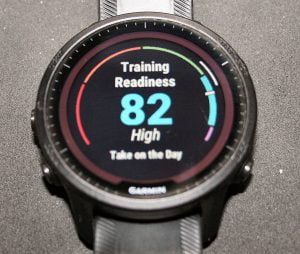

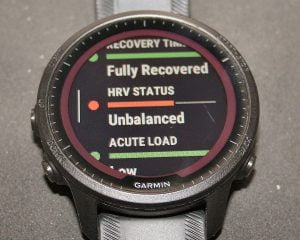

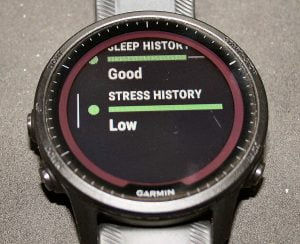
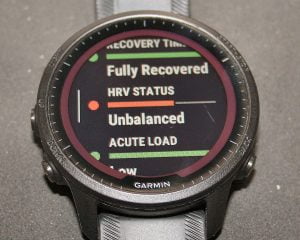
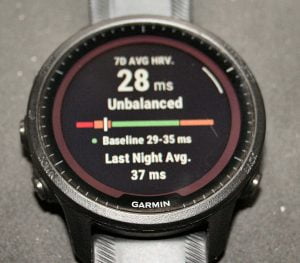


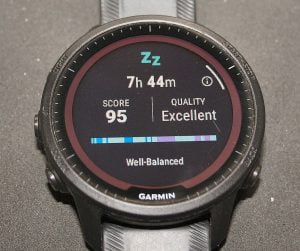

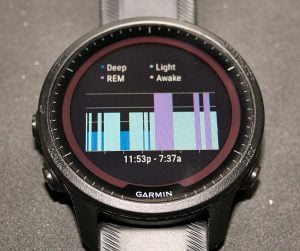



Not on a Fenix
It should come to the Fenix 7 series, but as of now it’s indeed not available as far as I know.
ty!
typical Garmin fashion: copy stuff from others (Polar Nightly Recharge, Whoop readiness ) without understanding the the topic and making something 75% out of it and calling it Garmin 8?/(F*_#% – the new hottest thing since sliced bread!
Actually, from my understanding Garmin has quite some experience with all of this through First Beat which it acquired . These guys are fairly smart when it comes to understanding training metrics. I would say the Garmin is anything other than casual when it comes to making their smart/sports watch data reliable and excellent.
I am a bit between you. I deem also that Firstbeat guys are good at exercise physiology, but Garmin’s other departments are good at ruining the internal values of the company, so not just once or twice it happens that the final outcome is as if they did not understand the topic.
Greenie, let me tell you that appr. 3 years ago after being stuck with Garmin Outdoors Support I exchanged some emails with a FB employee (FB was not a Garmin subsidiary at that time yet), who was finally shocked that I was right saying that one of their “products”/metrics bought and used/implemented by Garmin did not work in the same way as FB detailed it in their own white paper.
We concluded that he would contact Garmin to fix it, but finally nothing happened. I mean it was not enough for a modification that he called Garmin, although he was somebody who owned both the relevant knowledge and the necessary position within FB to officially report it to Garmin, and discuss it with them.
This story supports the foundation how the6krunner feels.
For me this is utter garbage – motivation messages about ‘living your best life’ or whatever cliché it decides to serve up each morning had me disabling it quick smart. Who on earth is this aimed at?
Not you apparently.
Given that most HRV data rises over the course of the night (naturally), are you comparing the morning readings, from an H10/app to the Garmin all-night readings above in that chart?
We also know that while Whoop now does account for more portions of the night, it’s not a simple-straight algorithm, but rather is weighted towards deep sleep (and, assuming it gets it right).
There’s definitely pros and cons to all-night versus morning-only though. While what Marco says is correct, as his follow-up tweet in that thread notes, it’s potentially due to simply accessibility of devices for those studies (waaay easier to just send a chest strap out than watches, and getting good HRV data at night on a chest strap is more complicated too for studies/users). Generally you’re going to see a moredepressed all-night averages for HRV than doing morning-only approach (because that’s HRV values slowly recovering throughout the night). But morning-only approach also has plenty of variability too, and is just as much impacted by taking a reading 5 minutes later than 5 minutes earlier. Or just the practicality of it for most people.
The correlation is from Marco’s HRv4 Training platform. So yes it compares a waking reading of an H10 with the various nightly averages. They are supposedly all attempting to determine the same thing, readiness/recovery, and so should infer similar things.
Yes, I pointed out, above that, single readings could be used either because they are easier or because they are correct (edited slightly). Either way, it’s those readings that form the science that Marco refers to and he knows his stuff.
I agree with the sentence that the easy win of morning-only approach would be too good to be true, because the definition is morning has the same sort of fluctuation as has the timing of sleep stages.
Using the link Eli provided, Marco wrote
“ If we use a data point collected at 1am one day, and at 4am another day, then we might have large variability between the scores simply because they are far apart. At that point, it is much better to take a morning measurement when you wake up, which is most likely happening every day in a narrower range.”
No, it isn’t. It may happen to be true for kids woken up by parents running to the office with the same bus, train at the same time, and therefore for their parents. But the more time you spend exercising it is more probable that you have some sort of autonomy in life and you can afford yourself to wake up not exactly at the same time, but at a time which is a kind of compromise what time it is and how dizzy or fresh you feel.
data at 1am can be affected by many things eg alcohol and eating late.
i agree with Marco.
Here is Marco’s view on all night hrv measurement https://medium.com/@altini_marco/what-you-need-to-know-about-heart-rate-variability-hrv-data-collected-during-the-night-eb3913ffdcf
yes, he worked on the algorithm for Oura.
He is talking about the method in that article. Using an oHRM adds complications of the data collection and that’s where the artefact removal happens by the algorithms.
I think firstbeat used to do 4 or 5 hour nightly sampling back in the day but with polar chest straps
Any idea if/when it will be on the 945lte? I see it isn’t mentioned as a feat ure on the 6.0.4 beta.
There are more features in beta than on that list, same for the Fenixes.
but, sy, IDK the exact answer to your question. this year i would have thought.
Why isn’t the weather forecast updated when I sync over WIFI?
I have selected a fixed place so that I don’t need the phone GPS coordinates.
i have problems with weather updates in general. even over ble.